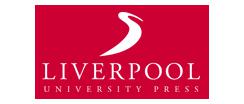- View more resources from this publisher
 Nuffield Foundation
Nuffield Foundation - View more resources from this publisher
 Liverpool University Press
Liverpool University Press
SPACE Project Research Report: Materials
The Science Processes and Concepts Exploration (SPACE) project research report on Materials was published in 1991 by Liverpool University Press. The SPACE research was conducted at two centres: at the University of Liverpool and King’s College, London, with Wynne Harlen and Paul Black as joint directors.
Each centre took responsibility for research in particular concepts and for producing the report of the work. In the case of Materials, one of the reports to be published after the publication in 1989 of the National Curriculum for England and Wales, the research was conducted from Liverpool and the authors were Terry Russell, Ken Longden and Dorothy Watt. The research was carried out between January and May 1990.
In previous SPACE research, conducted prior to the National Curriculum, a list of concepts was drawn up by the research team for each topic in order to define the focus of the research. The publication of the National Curriculum provided an externally defined framework of concepts which was adopted for this purpose. In the case of Materials these ideas were concerned with: the description and properties of materials; the states of matter; uses of materials; origins, manufacture and changes in materials.
For the first phase of the research, the researchers compiled activities for primary school students (aged 5 to 11 years) related to these ideas. Primary school teachers taking part in the project were provided with an introduction to these activities prior to involving their pupils in them. After two weeks of exposure to the activities students' ideas were elicited using a range of techniques including individual interviews by the researchers and written questions.
The next phase was intervention in which strategies were used to enable students to develop their ideas. This lasted for five weeks during which students' experiences were designed to test out their ideas, to discuss, amend, reject or retains their ideas. This was followed by further interviews and written questions so that pre- and post-intervention ideas could be compared.
The research report provides a large number of representations of students' ideas, both pre- and post-intervention, mainly through the students' drawing and writing and transcripts of their oral explanations. Tables giving pre-and post-intervention results for particular activities are included.
Shifts in the responses of individual children in relation to solids, liquids and gases are reported. Results varied according to the ideas about materials and, in the case of properties of materials, with the particular material concerned. Appendices provide full details of the activities, interview schedules, materials used in the activities and the classroom intervention strategies.
Contents
Introduction
1. Methodology
2. Exploration
3. Children’s ideas
4. Intervention
The effect of intervention: changes in children’s ideas
Summary
Appendices A1 – A8 (including bibliography)
Show health and safety information
Please be aware that resources have been published on the website in the form that they were originally supplied. This means that procedures reflect general practice and standards applicable at the time resources were produced and cannot be assumed to be acceptable today. Website users are fully responsible for ensuring that any activity, including practical work, which they carry out is in accordance with current regulations related to health and safety and that an appropriate risk assessment has been carried out.
Downloads
-
Materials 19.8 MB




